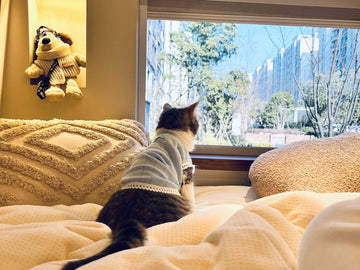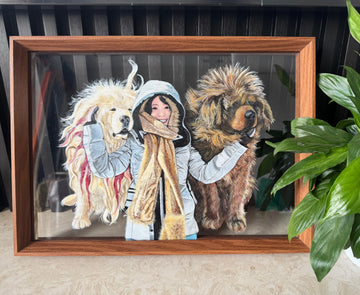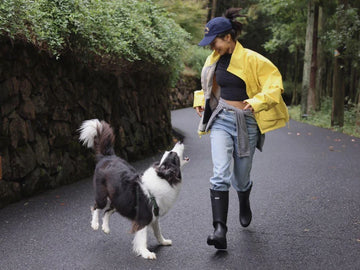From flexible work and pet-positive hospitality to better training methods and smarter gear, traveling with animals is shifting from “exception” to “expected.” This long-form, human-centered guide explores the forces behind the trend—and shows you how to build itineraries that keep everyone safer, calmer, and happier along the way.
Introduction: The New Normal of Pet-Centered Mobility
Ten years ago, traveling with pets felt like the exception. Today, it’s increasingly the plan. Remote work shifted schedules; hospitality adjusted to demand; and many households see animals as full family members whose needs shape route, lodging, and even choice of restaurants or hikes. On social platforms and in booking engines, “pet-friendly” filters are no longer a niche toggle—they’re a default consideration.
But “pet travel” isn’t just about allowing an animal to tag along. It’s a new way to design trips: more pauses, richer routines, and a more intentional pace. Families are building itineraries around sniff-based exploration, decompression walks, and calm-to-eat routines that lower stress for everyone. Done well, pet travel is not harder—it’s wiser. It prioritizes presence over rush and meaning over mileage.
1) What’s Driving the Trend (Culture, Work, Hospitality)
Culture
- Companion animals are recognized as family. This shifts “should we bring them?” to “how do we bring them safely?”
- Social media normalizes pet-inclusive itineraries and shares hyperlocal tips.
Work
- Remote/hybrid arrangements allow longer trips where pets remain part of daily life.
- “Blended” travel—work mornings, explore afternoons—pairs perfectly with pet routines.
Hospitality
- Hotels/Airbnbs publish clear pet policies, relief areas, and nearby parks.
- More transit options publish cabin rules and pet documentation lists upfront.
2) How People Now Travel with Pets (Road, Air, Rail, RV)
Road Trips
Road travel is the backbone of pet mobility because it preserves control—stops, temperature, noise, and familiarity. The best road plans build in predictable relief windows every 2–3 hours, plus one longer decompression stop to sniff and reset. Consider dashboard sun and backseat shade; bring window shades and a travel water mat.
Air Travel
Airlines vary widely. Focus on crate conditioning weeks ahead, noise desensitization routines at home (recorded airport sounds at low volume while feeding), and comfort layering (bedding with familiar scent + a cooler pad if your pet runs hot). For cabin-approved carriers, prioritize ventilation, secure closures, and “no-rattle” zippers to reduce agitation.
Rail & Public Transit
Some networks allow small pets in carriers. Avoid peak rush. Stand near doors for fast exits if needed and practice a “carrier comes good things” protocol at home: carrier appears → treat rain → carrier goes away again.
RVs & Campervans
RVs make “everything familiar” portable. Install non-slip rugs, shade film, and a fixed travel den (crate or hooded bed) that remains in the same spot. Build a door routine (“wait → clip → exit”) to prevent bolting when the door swings open in new environments.

3) Species & Personality Profiles (Not Just “Dogs vs Cats”)
Dogs
- Sporty adventurer: thrives on trails; needs post-hike cool-down and paw checks.
- Urban stroller: enjoys café corners and structured sniff routes over endurance miles.
- Shy observer: prefers quiet parks and slow mornings; design low-stimulation days.
Cats
- Carrier connoisseur: tolerates car rides with a covered carrier and start/stop predictability.
- Window perch traveler: prefers RVs/hotels with sunny ledges and night-time hush.
- At-home champion: some cats flourish with a sitter and home routines—respect this chronotype.
Small Companions & Birds
Travel for rabbits, ferrets, and birds requires precise thermal and noise control. Many do better with a qualified sitter and daily video check-ins. If you must travel, use microclimate comfort setups: stable temps, low vibration, and cover options.
4) Behavior Science: Calm Comes from Predictability
Pets read time through patterns. Before trips, build a few event-based anchors you’ll replicate on the road: a 60–90 second morning check-in, a calm-to-eat sequence, and a five-minute evening wind-down with a consistent sound. In unfamiliar rooms, these rituals say, “The rules still hold; you are safe.”
- Co-regulation: animals mirror our nervous systems. Slow your breathing; your pet follows.
- Choice reduces stress: two sleep surfaces (cool & warm), two exit routes (door & carrier).
- Predictable closure cues: end play with “last one,” then switch to a lick mat or chew to downshift.
Consistent sequences beat perfect timing. Pets trust order more than clocks.
5) Designing Pet-Friendly Itineraries (Step by Step)
1) Define the “why”
Are you prioritizing trails, cafés, or quiet beaches? Set a theme so you can filter aggressively. Pet travel fails when every hour tries to do everything.
2) Map daily energy waves
Place sniff sessions 20–30 minutes before expected peaks. If your dog fires up at 5 p.m., add a decompression walk at 4:30, not 5:30.
3) Block relief & snack windows
Every two to three hours on the road, plan a pause. Mark pet relief stations, shade pockets, and quiet side streets. Build acclimation walks—slow five-minute loops around each new lodging.
4) Score stops for “SANE”
- Shade
- Away from traffic surge
- Nose work potential (grass, planters, alleys)
- Exit options (easy retreat if startled)
5) Keep one daily “nothing” block
A 60–90 minute empty slot lowers everyone’s stress and prevents chain reactions from delays.
6) Packing & Readiness (Safety, Health, Comfort)
Safety
- Crash-tested seatbelt harness or anchored crate.
- ID tags + microchip registered with current phone/email.
- Photo of you with your pet (proof of ownership) on your phone.
Health
- Vaccination records; vet contacts along the route.
- Motion-sickness plan (ask your vet); trial runs before long trips.
- Med kit: antihistamine (vet-approved), paw balm, tick remover.
Comfort
- Two bedding options (warm/cool), collapsible bowls, slow-feeder.
- Travel chews, snuffle mat, and a familiar-scent cloth.
- Carrier cover for cats; white-noise app for hotel corridors.

7) On-the-Road Protocols (Breaks, Signals, Micro-Rituals)
Build “start,” “middle,” and “end” signals into each leg of travel. Start with a short sniff, end with a predictable close: “We’re done driving,” lights dim, water, chew, then settle phrase. These micro-rituals reduce nagging anxiety because the pattern teaches what comes next.
Reading stress signals
- Dogs: lip licking, yawning out of context, scanning, rigid tail tip.
- Cats: flattened ears, rapid tail flicks, still crouch, reduced blinking.
When you see rising stress, lower novelty. Fewer stimuli, slower movements, softer voice. “Less, but calmer” beats “more, but exciting.”
8) Lodging Etiquette & Room Setup
First five minutes
- Walk a perimeter loop; then enter and let your pet sniff the room on leash.
- Set up the dream-friendly den (covered bed/crate) in a corner away from the door swing.
- Play your evening settle sound for 60–90 seconds to claim the space as “home enough.”
Etiquette
- Bring sheets to protect furniture if your pet is allowed on beds at home.
- Pack wipes for paws after rainy walks to avoid muddy hallways.
- Leave no trace: good pet guests get welcomed back.
9) Cities vs. Nature: Matching Destinations to Needs
Urban trips
- Pick neighborhoods with pocket parks and quieter side streets.
- Plan café corners with shade and distance from speakers.
- Use noise desensitization routines beforehand for subway/bus sounds.
Nature escapes
- Check trail rules and heat exposure; pack extra water and tick checks.
- Wildlife etiquette: leash near nesting seasons; recall practice in low-distraction parks first.
- Rest-to-play ratio matters: add a cooling nap before sunset hikes.

10) Common Barriers—and Practical Solutions
Motion sickness
Trial short drives; seat forward-facing with a steady view; ventilate well; keep stomach “not empty, not full.” Ask your vet about anti-nausea strategies if needed.
Noise sensitivity
Desensitize early: play low-volume recordings while offering chews. Increase volume slowly over sessions. Pair scary sounds with predictable good things.
Heat & cold
Cars heat fast; pack thermometers and never leave pets unattended in vehicles. In cold climates, layer bedding and consider paw wax for ice and salt.
Policy confusion
Screenshot pet policies and save offline. Keep a folder with vet records, microchip info, and two local emergency clinics per stop.
11) What the Future Holds for Pet Travel
- Better transparency: Booking flows will show pet fees, size limits, and relief areas upfront.
- Design upgrades: Rooms with pet nooks, wipe stations, and sound-dampened floors.
- Community mapping: Crowd-sourced relief maps, shady routes, and pet-friendly transit hacks.
- Sustainability: Slower, longer stays with fewer transfers—good for pets and the planet.
12) FAQ (Collapsible)
Is it kinder to bring my pet or hire a sitter?
It depends on the individual. Confident travelers often enjoy the routine kept on the road. Shy, noise-sensitive animals may thrive with an in-home sitter and daily check-ins. “Kindest” means lowest stress for that pet.
How long can a dog stay in a car between breaks?
Plan 2–3 hour legs, with a longer decompression stop every 4–6 hours. Heat, age, and medical needs may require more frequent breaks.
My cat hates carriers—any hope?
Yes. Turn the carrier into furniture for two weeks: door open, soft bedding, treats tossed in, meals nearby. Reward approach, then entry, then brief closures. Slow and sweet wins.
What’s the one ritual to prioritize in hotels?
An evening settle sequence: dim lights → familiar scent bed → short sound cue → chew or gentle brushing. It tells the nervous system, “We’re home enough.”
Any airplane essentials?
Carrier that fits the rules, vet letter if required, absorbent pad, zipper ties, and a practiced “carrier equals calm snacks” routine.
13) Printable Checklists
Documents
- Vet records + meds list
- Microchip & ID tags
- Policy screenshots
- Local emergency clinics
Safety & Comfort
- Seatbelt harness or anchored crate
- Water, bowls, portable mat
- Shade film, window covers
- Two bedding textures
Behavior Tools
- Snuffle mat / foraging toy
- High-value chews
- Carrier cover (cats)
- Bedtime sound playlist
Conclusion
Pet travel is not a fad; it’s a rebalancing of priorities. When we build trips around rest, relief, and shared curiosity, the road gets kinder. The trend is global because the longing is universal: to keep the family together and to move through the world at a pace that respects living bodies. Start small. Pick one anchor ritual and one shade-filled stop. The rest unfolds.
Travel well, travel slowly, travel together.





